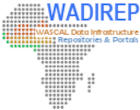Robust risk assessment requires accurate flood intensity area mapping to allow for the identification of populations and elements at risk. However, available flood maps in West Africa lack spatial variability while global datasets have resolutions too coarse to be relevant for local scale risk assessment. Consequently, local disaster managers are forced to use traditional methods such as watermarks on buildings and media reports to identify flood hazard areas. In this study, remote sensing and Geographic Information System (GIS) techniques were combined with hydrological and statistical models to delineate the spatial
limits of flood hazard zones in selected communities in Ghana, Burkina Faso and Benin. The approach involves estimating peak runoff concentrations at different elevations and then applying statistical methods to develop a Flood Hazard Index (FHI). Results show that about half of the study areas fall into high intensity flood zones. Empirical validation using statistical confusion matrix and the principles of Participatory GIS show that flood hazard areas could be mapped at an accuracy ranging from 77% to 81%. This was supported with local expert knowledge which accurately classified 79% of communities deemed to be highly susceptible to flood hazard. The results will assist disaster managers to reduce the risk to flood disasters at the community level where risk outcomes are first materialized.
Data and Resources
| Field | Value |
|---|---|
| Groups | |
| Modified | 2024-07-09 |
| Release Date | 2019-08-19 |
| Identifier | 8a896a46-cb0c-4ab5-8a59-f8c171e62ee8 |
| Covered Regions/Countries |


![[Open Data]](https://assets.okfn.org/images/ok_buttons/od_80x15_blue.png)